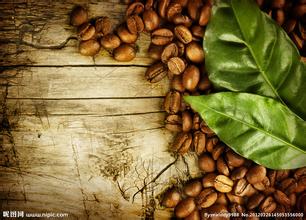Introduction to Ethiopian Coffee Grade
Ethiopian coffee grades:
Ethiopian washed coffee Yega Shefi G1 G2
The highest grades of Yirgacheffe, Sidamo are Grade II and Grade III (G2, G3),
Most of the sun-processed coffee in eastern Ethiopia is grade 4 or grade 5 (G4, G5).
In many cases, fourth-grade coffee is labeled as five-grade in order to reduce taxes. The current classification is not uniform and somewhat chaotic, because there are also Grand G2 and Grand G2 for sun-processed Yirga Cheffe coffee, but Harar is the highest grade (G4).
Ethiopia's coffee producing areas are Sidamo, Harrar and Yirgacheffe. Sidamo and Harrar are provinces and divisions. Sidamo is located in the south of Ethiopia adjacent to Kenya. Harrar borders Somalia in the east of Ethiopia. Although Yirgacheffe is a small area in Sidamo region, due to soil composition and water content, its coffee production is considered to be the best in Ethiopia.
In the West, Ethiopian coffee is marketed as Yirgacheffee, Sidamo and Harrar.
In the fine coffee sector, there are five other small local coffees, namely Limmu, Djimmah, Lekempti, Bebeka and Wolega. The most common coffee is either Sidamo or Harrar coffee.
Harar Coffee is produced in the eastern highlands of Ethiopia. It is medium bean-shaped, green-yellow, medium acidity, full bodied and has a typical mocha flavor. It is one of the most famous coffees in the world.
Wollega (Nekempte) coffee is produced in western Ethiopia. It is medium to large in bean shape and is famous for its rich fruit flavor. Green, brown color, acidity and body are good. It can be made into a combination or a single item.
Limu Coffee is known for its spicy and Winnie flavor and is popular in Europe and America. Acidity, good body, washed Lim coffee is also a fine coffee darling. Bean-shaped medium, green-blue, mostly round.
Sidama Coffee (Sidama Coffee) bean-shaped medium, green-gray, Sidamo washed coffee to taste, flavor balance for the characteristics, known as sweet coffee (sweet coffee), fine acidity, good body, produced in southern Ethiopia, can be combined with fine products.
Yirgacheffe Coffee has a strong floral flavor.
Washed coffee is one of the world's best high-quality coffee, soft acidity, rich body. Top and Bebeka coffees, low in acidity but high in body, are indispensable members of coffee blends
Ethiopia is home to Arabica coffee, and it is in the forests of the Ethiopian Kaffa region that you can see Arabica coffee growing wild. In Ethiopian, coffee is called "Bun" or "Buna," and coffeebean may be translated from "Kaffa Bun." Arabica coffee has long been found in Harar, probably from the Kafa forest.
Ethiopian coffee is processed by sun and water washing. The flavor of coffee processed by different processing methods varies greatly. Generally speaking, the mellow and earthy taste of washed Sidamo, Yirgacheffe and Limmu coffee is slightly lower, and the coffee processed by sun has a wilder taste. However, the taste of each batch of Ethiopian coffee may be different, which requires more cup tests to find the real good coffee.

Important Notice :
前街咖啡 FrontStreet Coffee has moved to new addredd:
FrontStreet Coffee Address: 315,Donghua East Road,GuangZhou
Tel:020 38364473
- Prev

The ingredients of coffee.
Caffeine has a particularly strong bitter taste and stimulates the central nervous system, heart and respiratory system. Appropriate amount of caffeine can also reduce muscle fatigue and promote digestive juice secretion. Because it promotes kidney function, it is diuretic and helps the body to expel excess sodium ions from the body. But eating too much can lead to caffeine poisoning. After the tannic acid is boiled
- Next

Origin flavor of Kenyan coffee
It entered Kenya in the 19th century, when Ethiopian coffee drinks were imported into Kenya through southern Yemen. But it was not until the early 20th century that the bourbon was introduced by the St. Austen Mission (St.AustinMission). Kenyan coffee is mostly grown at an altitude of 1500m, 2100m, and is harvested twice a year. To ensure that only ripe berries are picked, people must be in the forest
Related
- Beginners will see the "Coffee pull flower" guide!
- What is the difference between ice blog purified milk and ordinary milk coffee?
- Why is the Philippines the largest producer of crops in Liberia?
- For coffee extraction, should the fine powder be retained?
- How does extracted espresso fill pressed powder? How much strength does it take to press the powder?
- How to make jasmine cold extract coffee? Is the jasmine + latte good?
- Will this little toy really make the coffee taste better? How does Lily Drip affect coffee extraction?
- Will the action of slapping the filter cup also affect coffee extraction?
- What's the difference between powder-to-water ratio and powder-to-liquid ratio?
- What is the Ethiopian local species? What does it have to do with Heirloom native species?

